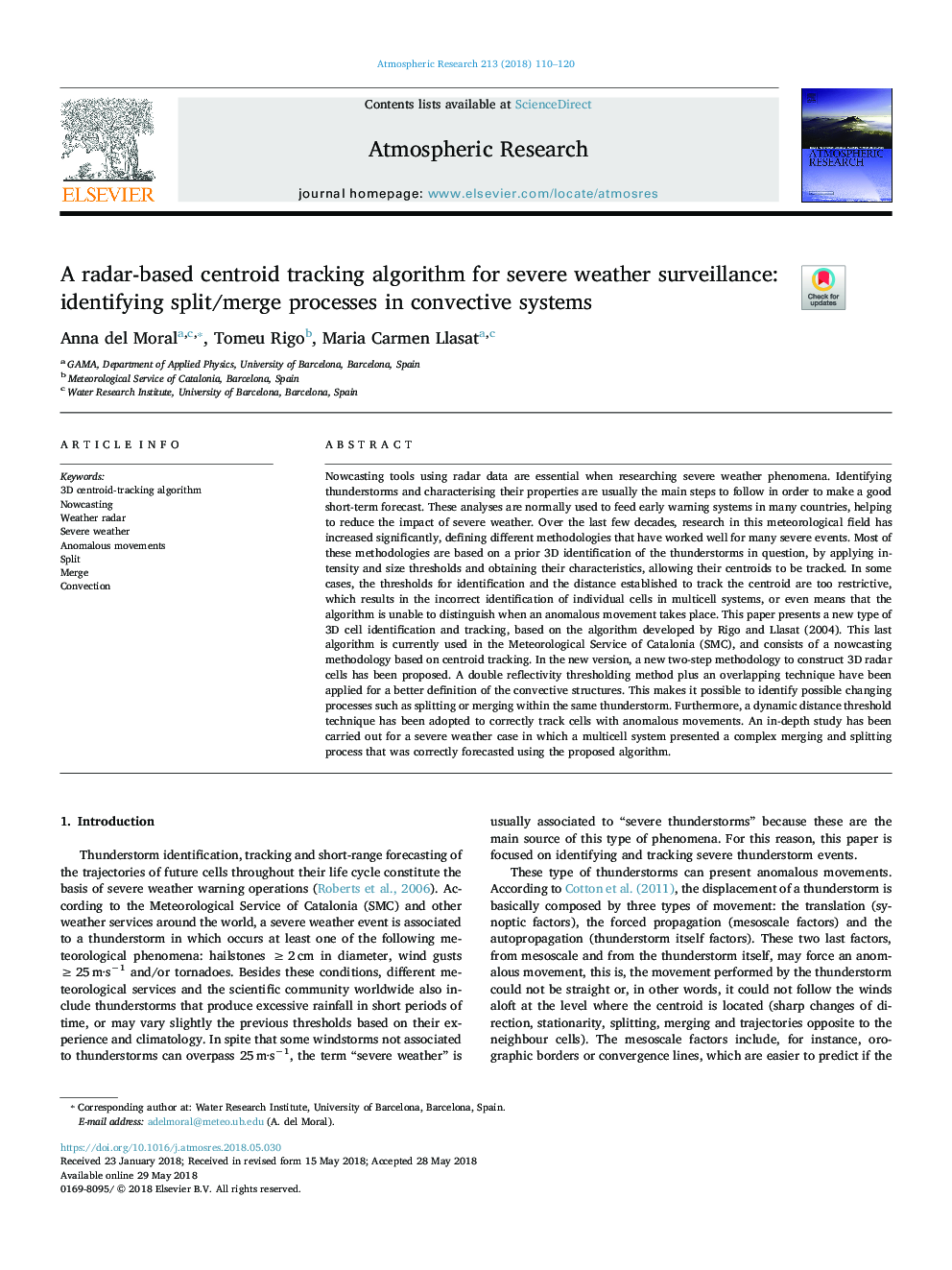| کد مقاله | کد نشریه | سال انتشار | مقاله انگلیسی | نسخه تمام متن |
|---|---|---|---|---|
| 8864475 | 1620468 | 2018 | 11 صفحه PDF | دانلود رایگان |
عنوان انگلیسی مقاله ISI
A radar-based centroid tracking algorithm for severe weather surveillance: identifying split/merge processes in convective systems
ترجمه فارسی عنوان
الگوریتم ردیابی مرکزی مبتنی بر رادار برای نظارت آب و هوایی شدید: شناسایی فرآیندهای تقسیم / ادغام در سیستم های کنتراست
دانلود مقاله + سفارش ترجمه
دانلود مقاله ISI انگلیسی
رایگان برای ایرانیان
کلمات کلیدی
موضوعات مرتبط
مهندسی و علوم پایه
علوم زمین و سیارات
علم هواشناسی
چکیده انگلیسی
Nowcasting tools using radar data are essential when researching severe weather phenomena. Identifying thunderstorms and characterising their properties are usually the main steps to follow in order to make a good short-term forecast. These analyses are normally used to feed early warning systems in many countries, helping to reduce the impact of severe weather. Over the last few decades, research in this meteorological field has increased significantly, defining different methodologies that have worked well for many severe events. Most of these methodologies are based on a prior 3D identification of the thunderstorms in question, by applying intensity and size thresholds and obtaining their characteristics, allowing their centroids to be tracked. In some cases, the thresholds for identification and the distance established to track the centroid are too restrictive, which results in the incorrect identification of individual cells in multicell systems, or even means that the algorithm is unable to distinguish when an anomalous movement takes place. This paper presents a new type of 3D cell identification and tracking, based on the algorithm developed by Rigo and Llasat (2004). This last algorithm is currently used in the Meteorological Service of Catalonia (SMC), and consists of a nowcasting methodology based on centroid tracking. In the new version, a new two-step methodology to construct 3D radar cells has been proposed. A double reflectivity thresholding method plus an overlapping technique have been applied for a better definition of the convective structures. This makes it possible to identify possible changing processes such as splitting or merging within the same thunderstorm. Furthermore, a dynamic distance threshold technique has been adopted to correctly track cells with anomalous movements. An in-depth study has been carried out for a severe weather case in which a multicell system presented a complex merging and splitting process that was correctly forecasted using the proposed algorithm.
ناشر
Database: Elsevier - ScienceDirect (ساینس دایرکت)
Journal: Atmospheric Research - Volume 213, 15 November 2018, Pages 110-120
Journal: Atmospheric Research - Volume 213, 15 November 2018, Pages 110-120
نویسندگان
Anna del Moral, Tomeu Rigo, Maria Carmen Llasat,
